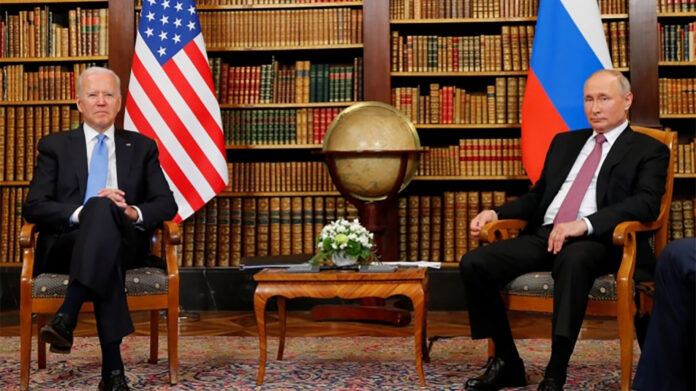Author: Eugene Chausovsky
Affiliation: Newlines Institute for Strategy and Policy, lecturer at US Department of State’s Foreign Service Institute, previously served as Senior Eurasia Analyst at Stratfor (10+ years)
Organization/Publisher: Al Jazeera Centre for Studies
Date/Place: April 2022/Doha, Qatar
Type of Literature: Analysis
Word Count: 2710
Link: https://studies.aljazeera.net/en/analyses/russia-ukraine-conflict-accelerating-multi-polar-world
Keywords: Russia, Ukraine, USA, Multi-polar World, Strategic Connectivity
Brief:
Eugene Chausovsky examines the ramifications of the Russia-Ukraine conflict and its influence on the world system through its acceleration of a multi-polar world order. He claims that although the conflict is on Ukrainian territory, it has turned to be globalized in nature due to its economic reach and geopolitical influence. The conflict has underlined the interconnectivity of the global system and has redrawn the architecture of what he calls connectivity flows of the world. Remarkably, the shift in these flows reflects a wider shift in global power architecture and power relationships that is accelerating the transition to a multi-polar world system. Chausovsky introduces the roots of the multi-polar world. Although the US has maintained its global influence after the end of the Cold War and worked against any rise of any challenging power, this dominant power position has been challenged over the last two decades due to its involvement in wars such as in Afghanistan and Iraq which scattered its attention and resources. This has paved the way for the emergence of global powers such as China and Russia that have showed either economic or political breakthrough. They have sought to challenge and compete with the US and its Western allies. Moreover, the emergence of middle powers as important geopolitical players that have pursued their own interests—including the EU, India, Japan, and Turkey—along with the rise of political populism, the development of transformative technologies, and the Covid-19 pandemic have enhanced the multi-polar order of the world. However, the way these global powers such as China, Russia and others approach their interests in such a shift to multipolarity is different. It is not only about the increasing number of players in the world system, but also the complexity and diversity of their influence through employing strategic connectivity to achieve their interests. This is clear in the position of different global and regional players to the conflict, starting from Russia itself to China and other important players—like Turkey and India—that have fluctuated between supporting Russia or the US strategy against the Russian invasion. Chausovsky explains that the Russia-Ukraine conflict has highlighted the complexity of the world power architecture and the transition from US domination over the global order to the challenge of other competitors (and even allies) through their positions toward the conflict. On the other hand, he refers to another scenario in which the US gets a more powerful global position as a result of the conflict. Nevertheless, in this case actors other than Russia, including China will continue challenging the US, and other players will seek to maintain their pragmatic interests. He refers to the Ukrainian president’s outreach to other players such as Qatar, Japan, Israel, and South Korea as evidence of their influence in shaping and directing the conflict and highlighting the multi-polar nature of the world. However, he speculates that such a transition to multi-polarity is not about the increasing number of influential players, rather it is about the types of power that would be maintained. Although traditional military power is still the most significant type of power in the Russia-Ukraine conflict, there are other types such as the ability to manipulate connectivity flows like energy and trade, along with institutional and cultural flows. Chausovsky concludes that speculation of whether this conflict would lead to weakening or strengthening the US’ global position is not clear yet and would depend on how the conflict resumes on ground. However, this could be answered based on the ability of any of these global players to manipulate and shape connectivity flows in an effective, strategic way. Finally, the multi-polar nature of the world seems to continue, and the world power architecture would be drawn by the “dynamic and complex competition over strategic connectivity”. The analysis comprehensively depicts the geopolitical structure of various players, both global and regional, active in the Russia-Ukraine conflict. The dual role of each actor and the different predicted scenarios and their consequences are underlined in an informative framework. The employment of the “strategic connectivity flows” framework has been fruitful in outlining the space and scope of other players’ influence on the global order. Although the question is still in search for an answer, the deployment of the connectivity framework of analysis would maintain this answer.
By: Yomna Süleyman, CIGA Research Assistant




